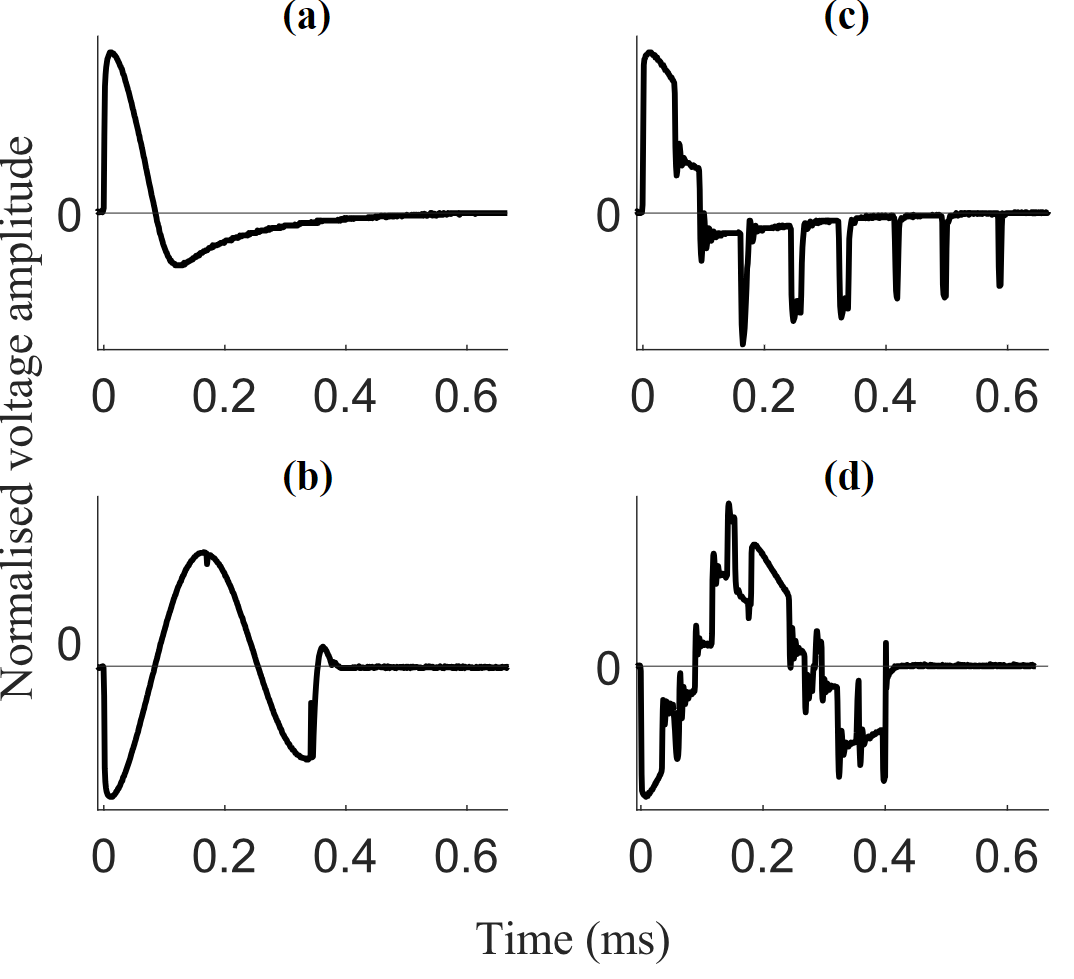The effect of pulse shape in theta-burst stimulation: Monophasic vs biphasic TMS.
Transcranial magnetic stimulation (TMS) is a non-invasive method of stimulating the brain. It is used in research and increasingly for the treatment of illnesses like depression. Typically, TMS is only applied using a two-phase stimulus pulse because of technical limitations. Using a new TMS device that we developed, we found that using a single-phase pulse can lead to an increased effect compared to using the two-phase pulse.
Intermittent theta-burst stimulation (i) (TBS) is a transcranial magnetic stimulation (TMS) plasticity protocol. Conventionally, TBS is applied using biphasic pulses due to hardware limitations. However, monophasic pulses are hypothesised to recruit cortical neurons more selectively than biphasic pulses, predicting stronger plasticity effects. Monophasic and biphasic TBS can be generated using a custom-made pulse-width modulation-based TMS device (pTMS).
Using pTMS, we tested the hypothesis that monophasic iTBS would induce a stronger plasticity effect than biphasic, measured as induced increases in motor corticospinal excitability.
In a repeated-measures design, thirty healthy volunteers participated in three separate sessions, where monophasic and biphasic iTBS was applied to the primary motor cortex (M1 condition) or the vertex (control condition). Plasticity was quantified as increases in motor corticospinal excitability after versus before iTBS, by comparing peak-to-peak amplitudes of motor evoked potentials (MEP) measured at baseline and over 60 min after iTBS.
Both monophasic and biphasic M1 iTBS led to significant increases in MEP amplitude. As predicted, linear mixed effects (LME) models showed that the iTBS condition had a significant effect on the MEP amplitude (χ (1) = 27.615, p < 0.001) with monophasic iTBS leading to significantly stronger plasticity than biphasic iTBS (t (693) = 2.311, p = 0.021). Control vertex iTBS had no effect.
In this study, monophasic iTBS induced a stronger motor corticospinal excitability increase than biphasic within participants. This greater physiological effect suggests that monophasic iTBS may also have potential for greater functional impact, of interest for future fundamental and clinical applications of TBS.

2024. Transl Psychiatry, 14(1):103.


